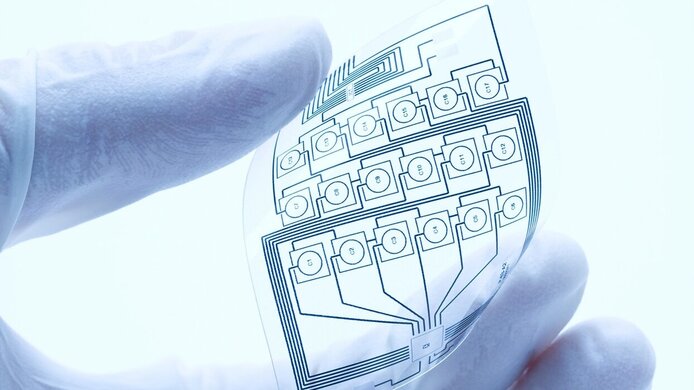Denim-coloured transistors

Silicon still represents the most important material for the production of semiconductor elements such as transistors, diodes or solar cells. For a number of years, however, an interesting alternative has been available: certain hydrocarbons that also exhibit semiconductor properties are now the new standard in OLED displays of mobile phones and television sets. Moreover, these “organic” semiconductors, as these hydrocarbons are also called, can also be used for solar cells or transistors. Their big disadvantage is their lack of stability: atmospheric oxygen quickly destroys these elements, which is why they need to be packaged in an airtight cover. A research team led by the physicist Serdar Sarıçiftçi from the Johannes Kepler University Linz has now achieved a breakthrough in solving this problem. In a project funded by the Austrian Science Fund FWF, the team managed to produce semiconductors related to the indigo pigment which is not only stable when exposed to air, but also under water.
A miracle material that is difficult to process
“Actually, we were looking for semiconductor materials that are biodegradable”, explains Sarıçiftçi. “In the process we came across this biblical material known as indigo. Indigo and its derivatives exhibit true semiconductor properties.” It did not come as a surprise that indigo showed high stability: “Indigo was used, for instance, in the tombs of Pharaohs, where it is still visible after thousands of years. And the blue in jeans’ material is well known for its sturdiness”, notes Sarıçiftçi. Processability was the problem in using indigo as a semiconductor: it is almost insoluble, which, incidentally, partly explains its durability. Many methods to produce organic semiconductor elements do, however, require the material to be first dissolved in some way and then deposited on a carrier medium. Sarıçiftçi and his group managed to render the pigment soluble by binding volatile side groups to the indigo molecule. When heated above 100°C these side groups split off again. That has removed the main obstacle to using indigo as a semiconductor, says Sarıçiftçi: “We see this stability of indigo as a game changer. We advise everyone working on organic transistors to concentrate on this class of materials from now on.”
Unanswered questions about solar cells and light diodes
Does this mean the entire field of organic semiconductors can now shift to indigo compounds? Sarıçiftçi sounds a note of caution: “Owing to the hydrogen bonds, indigo has strong luminescence-quenching properties.” This weak bond between molecules, which plays an important role in ice, has a disruptive effect on optical applications. The function of solar cells, for instance, is based on irradiating light interacting with the material, which releases electrons and initiates a current. In indigo molecules, however, such “excited” electronic states are quickly dissipated and converted into heat before they can be used. That means that both solar cells and light-emitting diodes will be difficult to realise with the indigo family of compounds. “We are trying to work around this problem, but there is no real solution to it”, explains. Sarıçiftçi. This is an aspect he is currently researching. Transistors are not affected by such problems.
Electronics for implants
Sarıçiftçi perceives great potential for indigo materials in medical uses. “We are devoting particular attention to the bio-compatibility of indigo transistors. We were able to show that they can operate even under water at different pH levels.” This means they can be used for implants in human tissue. “It opens the door for bio-applications”, observes Sarıçiftçi. Most recently his group published several articles on this issue in renowned journals and was granted a patent. In 2014, he started organising an annual conference on the topic of bioelectronics (www.bioel.at). The low cost of the basic material might also be a decisive advantage. “This will be an argument for future mass applications”, notes Sarıçiftçi.
Personal details Niyazi Serdar Sarıçiftçi is a physicist and head of the Linz Institute for Organic Solar Cells (LIOS) and the Institute of Physical Chemistry at the Johannes Kepler University Linz. His research focus lies on organic semiconductors, and in particular organic solar cells. Sarıçiftçi has received numerous awards, including the 2012 Wittgenstein Award from the FWF. He is a corresponding member of the Austrian Academy of Sciences (ÖAW).
Publications





